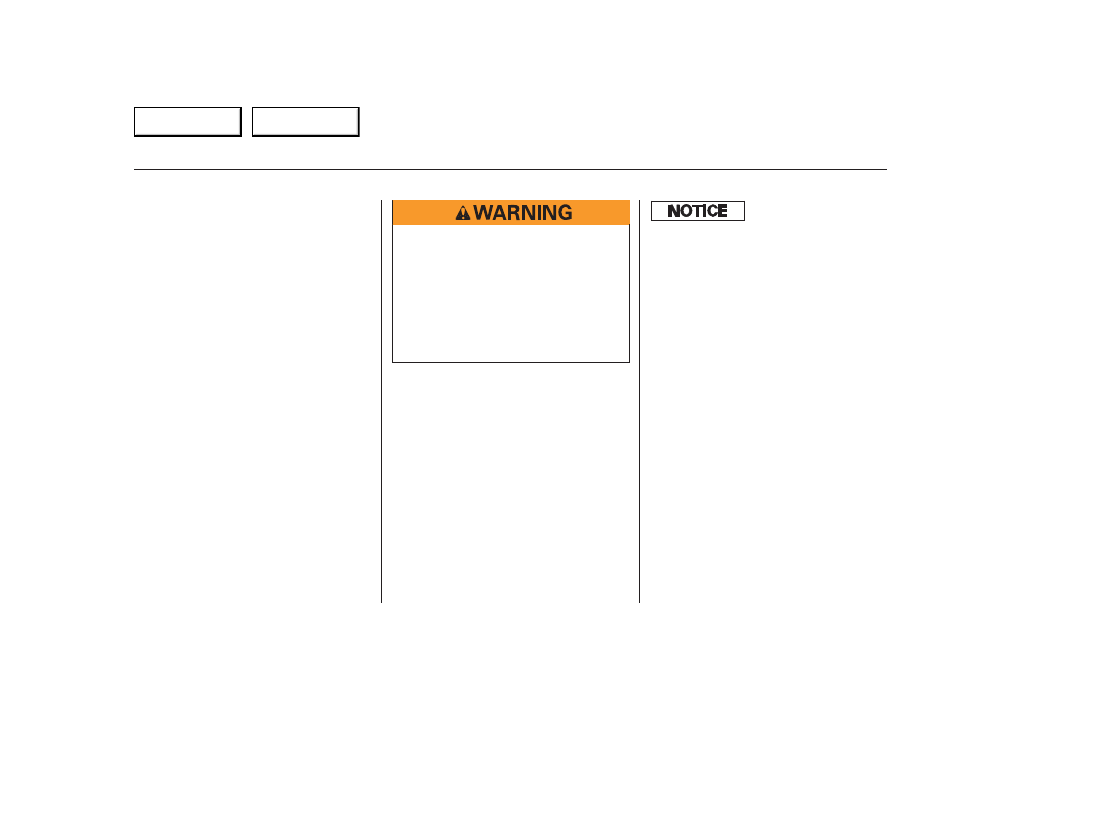Acura CL (2003 year). Manual - part 20

If your car’s battery has run down,
you may be able to start the engine
by using a booster battery. Although
this seems like a simple procedure,
you should take several precautions.
Turn off all the electrical acces-
sories: climate control, stereo
system, lights, etc.
Put the transmission in Neutral or
Park, and set the parking brake.
Remove the battery cover (see
page
).
You cannot start an Acura with an
automatic transmission by pushing
or pulling it.
Open the hood and check the
physical condition of the battery
(see page
). In very cold
weather, check the condition of
the electrolyte. If it seems slushy
or like ice, do not try jump starting
until it thaws.
To jump start your car, follow these
directions closely:
1.
2.
3.
CONTINUED
Jump Starting
Taking Care of the Unexpected
303
A battery can explode if you do
not follow the correct procedure,
seriously injuring anyone
nearby.
Keep all sparks, open flames,
and smoking materials away
from the battery.
If a battery sits in extreme cold, the
electrolyte inside can f reeze.
Attempting to jump start with a f rozen
battery can cause it to rupture.
Main Menu
Table of Contents